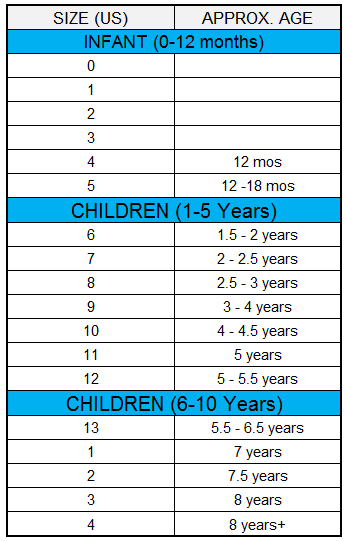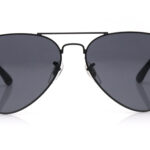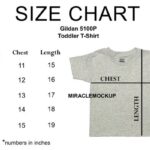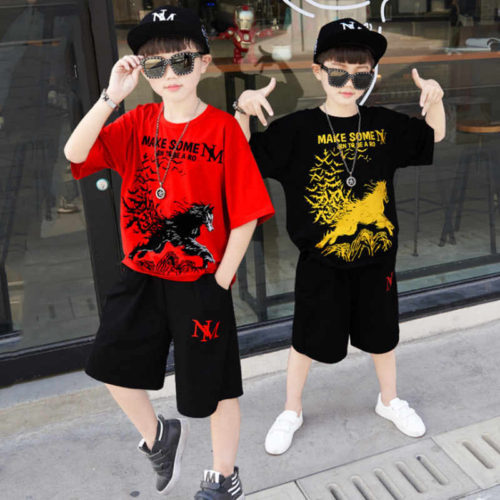A general kids’ shoe size guide suggests that children typically wear sizes 0-13 from ages 0-12. From ages 12 and up, they usually transition to adult sizes, starting around 5 or 6.
Finding the right shoe size for kids can be challenging. Children grow rapidly, and their feet require proper support for healthy development. A well-fitting shoe contributes to comfort, mobility, and overall well-being. Parents often wonder about the typical shoe sizes for various ages, as this knowledge can help in making informed purchasing decisions.
Understanding these size ranges not only helps in selecting the right footwear but also ensures that children can engage in activities without discomfort. This guide provides an overview of kids’ shoe sizes by age, making it easier for parents to choose the best fit.
Table of Contents
The Importance Of Proper Fit For Kids’ Shoes
Choosing the right size for kids’ shoes is crucial. A proper fit supports healthy growth and prevents foot problems. Kids grow quickly, and their feet need the right space. Ill-fitting shoes can cause pain and discomfort.
Growth And Development
Children’s feet grow rapidly. They can increase in size several times a year. Here are some key points to remember:
- Measure feet every few months.
- Consider width as well as length.
- Choose shoes with room to grow.
Look for shoes with flexible materials. They should allow natural foot movement. Check for a thumb’s width of space at the toe. This ensures comfort and support.
Preventing Foot Problems
Wearing the wrong size can lead to foot issues. Here are common problems:
| Foot Problem | Cause |
|---|---|
| Bunions | Narrow shoes |
| Flat Feet | Inadequate arch support |
| Blisters | Friction from tight shoes |
Properly fitting shoes help avoid these issues. Encourage kids to wear shoes designed for their activities. Comfortable shoes improve balance and stability.
Estimating Shoe Size By Age
Choosing the right shoe size for kids is essential. A proper fit keeps their feet comfortable. This section helps estimate shoe sizes based on age. Follow these guidelines for a better fit.
General Guidelines
Here are some important tips for estimating shoe sizes:
- Measure feet regularly as kids grow quickly.
- Consider width along with length.
- Shoe sizes vary by brand, so try before buying.
- Look for shoes with adjustable features.
- Check for a thumb’s width of space at the toe.
Age-specific Size Charts
The following table shows average shoe sizes by age:
| Age (Years) | US Shoe Size | Foot Length (inches) |
|---|---|---|
| 0 – 1 | 0 – 4 | 3.5 – 4.5 |
| 1 – 2 | 4 – 7 | 4.5 – 5.5 |
| 2 – 3 | 7 – 10 | 5.5 – 6.5 |
| 3 – 4 | 10 – 13 | 6.5 – 7.5 |
| 4 – 5 | 13 – 1 | 7.5 – 8.5 |
| 5 – 6 | 1 – 3 | 8.5 – 9.5 |
Use this chart as a guide. Always measure feet for the best size. This ensures comfort and support for growing feet.
Measuring Your Child’s Feet At Home
Measuring your child’s feet at home is easy and fun. Accurate measurements help you choose the right shoe size. This keeps your child’s feet healthy and comfortable. Follow these simple steps for the best results.
Tools And Techniques
Gather the right tools for measuring your child’s feet. Here’s what you need:
- A piece of paper
- A pencil
- A ruler or measuring tape
- Scissors (for cutting the paper)
Use these techniques for accurate measurements:
- Place the paper on a flat surface.
- Have your child stand on the paper with their heel against a wall.
- Trace around their foot carefully.
- Measure the longest distance from heel to toe.
Tips For Accurate Measurement
Follow these tips to ensure precise measurements:
- Measure both feet. One foot may be larger than the other.
- Do this measurement in the afternoon. Feet swell during the day.
- Wear socks similar to those worn with shoes.
- Check the size chart for the brand you are buying.
Use the following table as a reference for kids’ shoe sizes:
| Age (Years) | US Shoe Size |
|---|---|
| 1 – 2 | 4 – 6 |
| 2 – 3 | 7 – 9 |
| 4 – 5 | 10 – 12 |
| 6 – 8 | 13 – 3 |
| 9 – 12 | 4 – 7 |
Taking the time to measure your child’s feet helps a lot. Happy shoe shopping!
Interpreting Shoe Size Charts
Understanding shoe size charts can be tricky. Kids grow fast. Choosing the right size helps their feet develop properly. Accurate sizing is crucial for comfort and support.
Understanding Length And Width
Every child’s foot is unique. Shoe sizes measure both length and width. Here’s how to interpret these measurements:
- Length: This is the distance from the heel to the toe.
- Width: This indicates how wide the shoe is.
Foot length usually determines the shoe size. Width is important for comfort. A shoe that is too narrow can cause pain. A shoe that is too wide can lead to blisters.
Use the following table to see common lengths and widths:
| Age Group | Length (inches) | Width (Standard) |
|---|---|---|
| 0-12 Months | 4.5 – 5.5 | Wide (W) |
| 1-2 Years | 5.5 – 6.5 | Medium (M) |
| 3-5 Years | 6.5 – 8.0 | Wide (W) |
| 6-8 Years | 8.0 – 10.0 | Medium (M) |
| 9-12 Years | 10.0 – 12.0 | Wide (W) |
International Size Conversions
Shoe sizes vary around the world. Knowing these differences helps in choosing the right size.
- US Sizes: Commonly used in America.
- UK Sizes: Used in the United Kingdom.
- EU Sizes: Used in Europe.
Here’s a simple conversion guide:
| US Size | UK Size | EU Size |
|---|---|---|
| 3 | 2.5 | 35 |
| 5 | 4.5 | 37 |
| 7 | 6.5 | 39 |
| 9 | 8.5 | 41 |
Always check the conversion before buying shoes. A size mismatch can lead to discomfort.
When To Size Up: Signs To Watch For
Choosing the right shoe size for kids is crucial. They grow quickly, and their shoes must fit well. Here are signs to know when to size up.
Recognizing Growth Spurts
Growth spurts happen fast. Kids can grow several sizes in just a few months. Watch for these signs:
- Frequent complaints about tight shoes
- Visible toe marks on the shoe
- Difficulty putting on or taking off shoes
- Shoes that feel stiff or uncomfortable
Measure your child’s feet every few months. This helps catch growth spurts early. Regular checks keep their shoes fitting well.
Comfort Vs. Extra Room
Comfort is vital for kids’ shoes. A good fit allows for some extra room. Here’s how to find the right balance:
| Fit Type | Description |
|---|---|
| Comfort Fit | Snug but not tight. Enough room for toes. |
| Extra Room | More than half an inch is too much. Can cause slipping. |
Check the fit by having your child stand. Their toes should barely touch the front. This ensures they have space to grow.
By paying attention to these signs, parents can ensure their kids wear the right size shoes. Proper fitting helps with comfort and foot health.

Credit: www.pinterest.com
The Role Of Socks In Shoe Fitting
Socks play an essential role in achieving the perfect shoe fit for kids. They can affect comfort, support, and overall foot health. Choosing the right socks can help prevent blisters and ensure proper sizing. Let’s explore how socks impact shoe fitting.
Choosing The Right Socks
Selecting the correct socks is crucial for a good fit. Here are some tips:
- Material: Look for breathable fabrics like cotton or wool.
- Thickness: Choose thin socks for snug shoes and thicker ones for roomy shoes.
- Size: Ensure socks fit well without being too tight or too loose.
- Cushioning: Extra padding offers support and comfort.
Socks And Shoe Size Considerations
Socks can influence how shoes fit. Consider these factors:
| Sock Type | Shoe Fit Impact |
|---|---|
| Thin Socks | May make shoes feel larger. |
| Thick Socks | Can make shoes feel smaller. |
| Compression Socks | Provide support and may alter fit. |
Always measure children’s feet with socks on. This ensures the best fit. Remember, a well-fitted shoe protects growing feet. Check the fit frequently as kids grow fast.
Seasonal Considerations For Shoe Sizing
Choosing the right shoe size for kids involves seasonal changes. Shoes that fit in summer may not fit in winter. Kids’ feet grow quickly, so it’s important to adjust sizes based on the season.
Summer Vs. Winter Sizes
Summer and winter shoes differ greatly. Summer shoes tend to be lighter and less constricting. Winter shoes often have insulation and thicker materials.
| Season | Typical Shoe Type | Size Consideration |
|---|---|---|
| Summer | Sandals, Sneakers | Allow room for growth |
| Winter | Boots, Insulated Shoes | Snug fit for warmth |
During summer, kids wear sandals and lightweight sneakers. These styles should have some extra room. In winter, boots need a snug fit. This ensures warmth and comfort.
Adjusting For Outdoor Activities
Outdoor play impacts shoe sizing. Kids run and jump, so shoes should fit well.
- For active play: Choose shoes that provide support.
- For sports: Pick size-specific athletic shoes.
- For casual wear: Opt for flexible and breathable options.
Consider your child’s activities in each season. Measure their feet regularly. Growth spurts can happen anytime. Adjust sizes accordingly to keep them comfortable.
Navigating Different Shoe Types And Brands
Choosing the right shoes for kids can be tricky. Different brands and styles often have unique sizing. Understanding these differences helps you find the perfect fit. This section guides you through brand-specific and style-specific sizing tips.
Brand-specific Sizing
Each shoe brand has its own sizing chart. Some brands may run larger or smaller. Here are popular brands and their sizing traits:
| Brand | Sizing Trait |
|---|---|
| Nike | Typically runs small. Consider sizing up. |
| Adidas | Often true to size. Check reviews for specifics. |
| New Balance | Known for wider fits. Great for chubby feet. |
| Puma | Usually runs true to size. Fit is standard. |
Always check the brand’s size chart before buying. A little research saves time and money.
Style-specific Sizing Tips
Different shoe styles fit differently. Here are tips for various styles:
- Sneakers: Look for breathable materials. Ensure they provide good support.
- Sandals: Check for adjustable straps. This ensures a snug fit.
- Boots: Consider insulation for colder weather. Ensure there’s enough room for thick socks.
- Dress Shoes: Choose a style with a soft lining. Comfort is key for longer wear.
Measure your child’s feet regularly. Growth spurts happen quickly. A proper fit keeps little feet happy.
The Impact Of Foot Shape On Shoe Size
Understanding foot shape is crucial for selecting the right shoe size. Each child’s feet grow differently. Factors like width and arch height affect shoe fit. The right fit promotes comfort and healthy foot development. Let’s explore how foot shape influences shoe size.
Wide Vs. Narrow Feet
Foot width significantly impacts shoe size. Children may have either wide or narrow feet. Here’s a quick guide:
| Foot Type | Recommended Shoe Size Tips |
|---|---|
| Wide Feet |
|
| Narrow Feet |
|
High Arches And Flat Feet
Foot arch height also affects shoe size and fit. Children may have high arches or flat feet.
Each type needs specific shoe characteristics:
- High Arches:
- Look for shoes with good arch support.
- Choose cushioned soles for comfort.
- Avoid overly flexible shoes.
- Flat Feet:
- Seek shoes with stability and motion control.
- Consider orthotic insoles for added support.
- Avoid high heels or shoes with little support.
Choosing the right shoe size based on foot shape ensures comfort. Proper fit helps prevent future foot problems.
Online Shopping For Kids’ Shoes
Shopping for kids’ shoes online is convenient and fun. Parents can explore many styles without leaving home. Finding the perfect fit is essential for comfort and support. This guide helps you navigate online shoe shopping for your little ones.
Using Virtual Fitting Tools
Many online stores offer virtual fitting tools. These tools help determine the right shoe size. They use your child’s foot measurements for accuracy. Follow these simple steps:
- Measure your child’s foot length.
- Visit the store’s fitting tool page.
- Input the measurements.
- View recommended sizes.
Some brands provide augmented reality features. These let you see how shoes fit virtually. This can help avoid wrong size purchases.
Returns And Exchanges
Even with virtual tools, returns may happen. Understanding the return policy is crucial. Here are key points to consider:
- Check the time limit for returns.
- Look for free return shipping options.
- Keep the original packaging.
- Know the steps to initiate a return.
Exchanges can also be straightforward. Most stores allow size changes easily. Make sure to act quickly to find the right fit.
Getting Professional Fittings
Professional fittings help ensure kids wear the right shoe size. Properly fitted shoes support healthy foot development. They also boost comfort during play and activities.
Benefits Of In-store Fittings
- Accuracy: Experts measure both feet for the best fit.
- Comfort: Properly fitted shoes reduce blisters and soreness.
- Support: Professionals guide on shoe types for activities.
- Growth: They monitor foot growth and recommend future sizes.
Finding A Reputable Shoe Store
Choosing the right store matters for quality fittings. Look for stores with a good reputation. Here are tips to find one:
- Ask for Recommendations: Seek advice from friends and family.
- Check Reviews: Read online reviews about local stores.
- Visit the Store: Observe the fitting process and staff knowledge.
- Quality Brands: Ensure they carry reputable shoe brands.
Finding a reliable shoe store ensures your child’s feet stay healthy. Invest time to find the best fitting experience.
Educating Kids On Comfortable Shoe Fit
Teaching kids about the importance of a comfortable shoe fit is essential. Properly fitting shoes support healthy foot development. They help prevent discomfort and foot problems as children grow.
Teaching Self-assessment
Self-assessment empowers kids to recognize their shoe fit. Encourage them to check for these signs:
- Toe Space: Ensure there’s a thumb’s width of space.
- Heel Fit: The heel should not slip out.
- Width: Shoes should not pinch or squeeze.
Use this simple method:
- Stand up straight.
- Check the space between the toe and the shoe.
- Walk around to test comfort.
Encouraging Feedback On Fit
Kids should feel comfortable sharing their thoughts on shoe fit. Ask questions to gauge their comfort level:
- Does the shoe feel tight or loose?
- Can you wiggle your toes freely?
- Do you feel any pinching or rubbing?
Consider keeping a chart:
| Age Group | Average Shoe Size | Comfort Level |
|---|---|---|
| 0-12 Months | Size 0-3 | Very Soft |
| 1-3 Years | Size 4-8 | Flexible |
| 4-6 Years | Size 9-12 | Roomy |
| 7-10 Years | Size 13-4 | Supportive |
Encourage them to express discomfort. Their feedback helps in choosing the right shoes.
Maintaining A Shoe Rotation And Proper Care
Keeping your child’s shoes in great shape is essential. A good shoe rotation helps them last longer. Proper care ensures comfort and hygiene. Let’s explore how to extend the lifespan of shoes and maintain cleanliness.
Extending Shoe Lifespan
Follow these tips to make shoes last longer:
- Rotate Shoes: Use different pairs each week.
- Choose Quality: Invest in durable shoes.
- Check Fit: Ensure shoes fit well. Tight shoes can damage them.
- Use Protective Spray: Apply water-resistant spray on new shoes.
- Clean Regularly: Remove dirt after each wear.
Hygiene And Shoe Storage
Keeping shoes clean is vital for your child’s health. Follow these hygiene tips:
- Wash Insoles: Remove and wash them weekly.
- Air Out Shoes: Let them breathe after use.
- Store Properly: Use a cool, dry place for storage.
Consider these storage ideas:
| Storage Option | Benefit |
|---|---|
| Shoe Boxes | Protects from dust and damage |
| Shoe Racks | Easy access and visibility |
| Drawer Organizers | Maximizes space and keeps pairs together |
Proper care keeps shoes fresh and comfortable. Regular maintenance helps your child’s feet stay healthy.

Credit: www.pinterest.com
Frequently Asked Questions
What Shoe Size Is Typical For Toddlers?
Toddlers usually wear shoe sizes ranging from 5 to 10, depending on their age and growth rate.
How Can I Measure My Child’s Foot Size?
Use a ruler or a foot measuring tool to measure the length and width of your child’s foot accurately.
What Size Shoes Do 5-year-olds Wear?
Five-year-olds typically wear shoe sizes between 10 and 12, varying by brand and individual foot growth.
How Often Should I Check Shoe Size?
Check your child’s shoe size every 2-3 months to ensure a proper fit as their feet grow rapidly.
Conclusion
Choosing the right shoe size for kids is essential for their comfort and development. Regularly measuring their feet ensures a proper fit. A well-fitted shoe can enhance their activities and support healthy growth. Keep this guide handy for easy reference as your child grows.
Happy shoe shopping!







